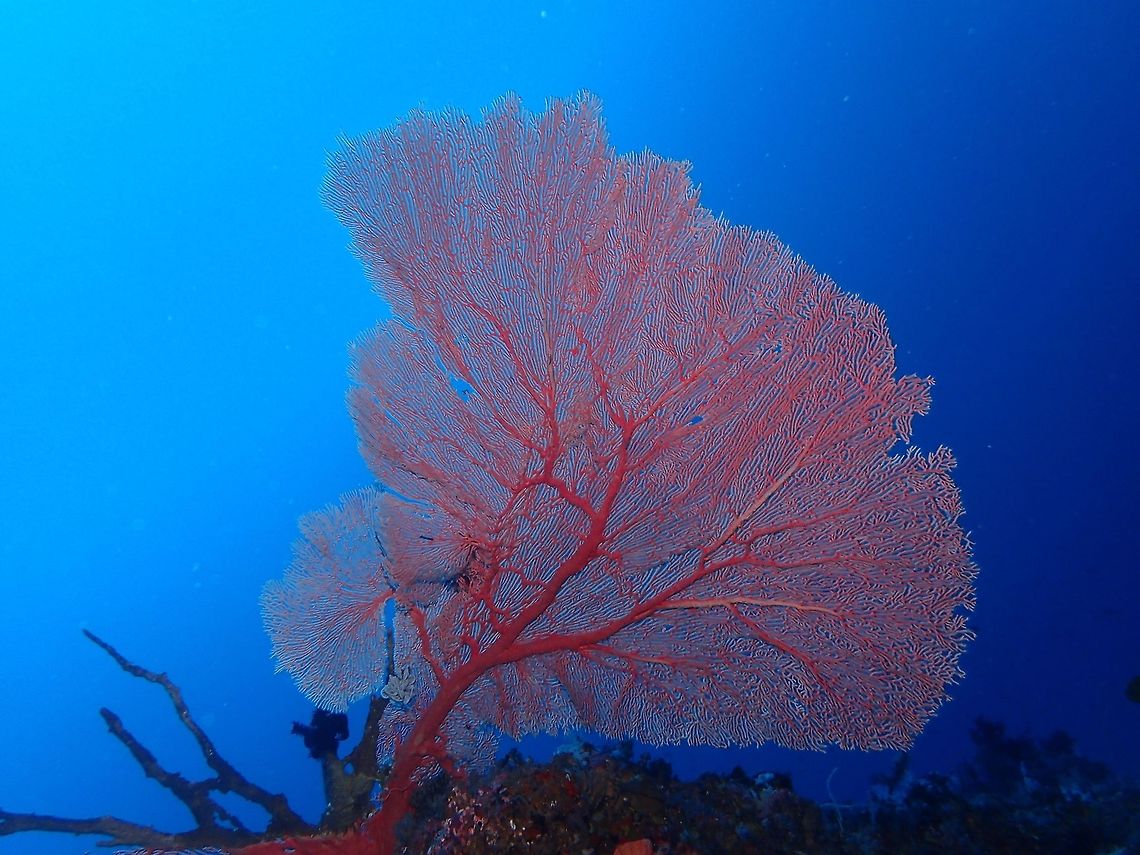 Promoted
Promoted
Gorgonian Seafan
This seafans from the genus Gorgonia can grow to be very big. This one was around meters in height but half (left side) of it in width has been damaged. Am not certain, but it could be possible they can group up to 3 meters or more and its a wonder how long it takes for them to grow that big!
No species identified
The species on this photo is not identified yet. When signed in, you can identify species on photos that you uploaded. If you have earned the social image editing capability, you can also identify species on photos uploaded by others.
By Albert Kang
All rights reserved
Uploaded Sep 18, 2016. Captured Sep 18, 2016 09:20 in Unnamed Road, Tingloy, Batangas, Philippines.

comments (4)
This reference indicates that some seafans have lived up to 500 years old!
https://www.montereybayaquarium.org/animal-guide/invertebrates/red-sea-fan
Their growth rates depends on many factors. This is another reference I found about their growth rate :
G. ventalina has a unique growth style that is influenced by feeding style; because they are filter feeders their growth form allows for optimal contact between living colony tissue and water (Matsumoto 2004). A study by Matsumoto (2004) looked at the growth of gorgonians in Japan, through these studies the growth form of G. ventalina is more known about because of the similarities between sea fans in the two regions. It was once thought that this shape was symmetric however recent studies have shown that the growth of the branches is not continuous and homogenous but rather believed that each of the main branches in the sea fan grows independently. Gorgonian growth is influenced by the variation in seasonal growth which can include water temperature, food abundance, and seasonal reproduction. When reproduction and water temperature are at the greatest the growth rate is slowest, therefore the highest growth rates have been seen in the winter when the water temperatures and reproduction are at the lowest. The reason behind this is because the energy that was once used on reproduction can then be used on growth. Growth rates are also highest in injured gorgonians because of the need to regain the optimal size for feeding and respiration requirements. Size limitation for gorgonians is due to water flow and allowing for the largest contact to occur between the tissue and water. Because of the reasons that they grow to allow for largest contact then it is reasonable to say that their growth rate would decrease with age, the reason that this occurs is because there are many risks and few advantages for the colonies to grow above optimal size. These risks include aerial exposure and set the upper limit on the size of colonies because of the probability of whole-colony mortality (Birkeland 1974). Posted 9 years ago